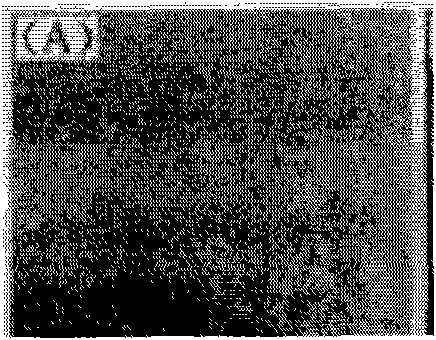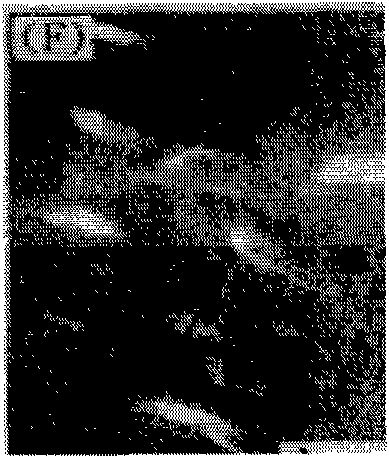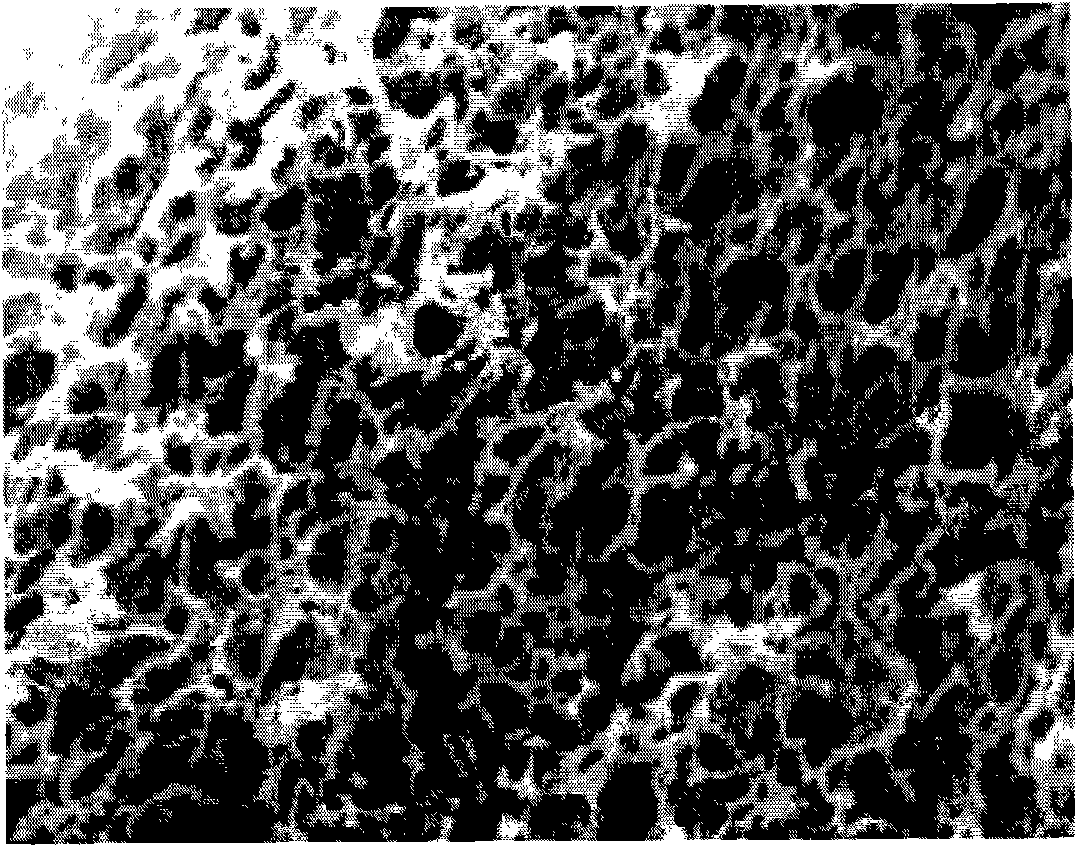Polyimide porous membrane and lithium ion battery comprising same
A technology of polyimide and polyamic acid membranes, applied in secondary batteries, battery components, circuits, etc., can solve the problems of uneven pore size of polyimide membranes, achieve good air permeability, and process finished products The effect of improving the efficiency and improving the service life
- Summary
- Abstract
- Description
- Claims
- Application Information
AI Technical Summary
Problems solved by technology
Method used
Image
Examples
Embodiment approach
[0049] According to a preferred embodiment of the present invention, the preparation method of polyimide porous membrane provided by the present invention comprises the steps:
[0050] (1) Tetraacid dianhydride and organic diamine are added to the solvent according to the molar ratio of 0.8-1.2:1, the amount of solvent used is such that the concentration of the obtained polyamic acid is 5-40% by weight, at 20-70°C After stirring and reacting for 3-15 hours, add pore-forming substances, the weight ratio of pore-forming substances to the obtained polyamic acid is 0.01-0.3:1; vacuum degassing at the same temperature for 1-12 hours to obtain a polyamic acid solution;
[0051] (2) At a temperature of 10-40°C and a relative humidity of 20-80%, the above polyamic acid solution is coated on a stainless steel or glass support, dried at 20-200°C, and the solvent is removed to obtain 8 - 30 micron polyamic acid film;
[0052] (3) the porous polyamic acid film obtained above is heated un...
Embodiment 1
[0065] This embodiment is used to illustrate the preparation of the polyimide porous membrane provided by the present invention
[0066] (1) 4,4'-diaminodiphenyl ether and pyromellitic dianhydride are added to 300 milliliters of N,N-dimethylacetamide at a molar ratio of 1:1, wherein the solid content is 10% by weight (Solid content refers to the mass percentage of the weight of polyamic acid generated in the system to the total weight of the mixture). Stir the reaction at 25°C for 8 hours, then add 3 grams of pore-forming substance diisooctyl phthalate, and vacuum degassing at this temperature for 1 hour to obtain a viscous mixture with an intrinsic viscosity η int =175 ml / g (measurement conditions: Ubbelohde viscometer, constant temperature 30°C, the mixture is diluted to a solid content of 0.005 g / ml);
[0067] (2) At a temperature of 10°C and a relative humidity of 50%, the above mixture is coated on a stainless steel plate, dried at 100°C for 20 minutes, and then the solv...
Embodiment 2
[0072] This embodiment is used to illustrate the preparation of the polyimide porous membrane provided by the present invention
[0073] Prepare polyimide porous membrane according to the method for embodiment 1, difference is, the pore-forming substance that adds in step (1) is 4.5 grams of trioctyl trimellitate, obtains the mixture of viscous shape, the mixture of Intrinsic viscosity η int =148 ml / g (measurement conditions: Ubbelohde viscometer, constant temperature 30°C, the mixture is diluted to a solid content of 0.005 g / ml). The way of heating is to keep at 80°C for 1 hour, at 150°C for 1 hour, and at 350°C for 1 hour. Finally, a polyimide porous membrane with a thickness of 18 micrometers was obtained.
[0074] Mercury porosimetry is used to measure the pore diameter of the polyimide porous membrane obtained above. The pore volume of the pores with a pore diameter of 130-380 nanometers accounts for 76% of the total pore volume, and the average pore diameter of the fil...
PUM
| Property | Measurement | Unit |
|---|---|---|
| thickness | aaaaa | aaaaa |
| melting point | aaaaa | aaaaa |
| diameter | aaaaa | aaaaa |
Abstract
Description
Claims
Application Information
 Login to View More
Login to View More - R&D
- Intellectual Property
- Life Sciences
- Materials
- Tech Scout
- Unparalleled Data Quality
- Higher Quality Content
- 60% Fewer Hallucinations
Browse by: Latest US Patents, China's latest patents, Technical Efficacy Thesaurus, Application Domain, Technology Topic, Popular Technical Reports.
© 2025 PatSnap. All rights reserved.Legal|Privacy policy|Modern Slavery Act Transparency Statement|Sitemap|About US| Contact US: help@patsnap.com



